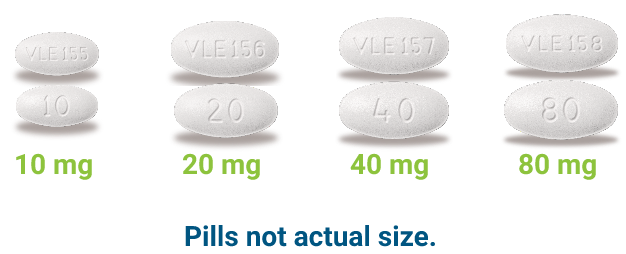Your doctor is the best source for answering your specific questions about cholesterol and treatment with LIPITOR. You can also find answers to common questions here.
To see questions, click on the topics below.
Your doctor is the best source for answering your specific questions about cholesterol and treatment with LIPITOR. You can also find answers to common questions here.
To see questions, click on the topics below.
LIPITOR is a prescription medicine that contains a cholesterol lowering medicine (statin) called atorvastatin. LIPITOR is used:
It is not known if LIPITOR is safe and effective in children younger than 10 years of age with HeFH or HoFH or in children with other types of hyperlipidemias (other than HeFH or HoFH).
LIPITOR is a prescription medicine. Only your doctor can properly determine if you need a prescription medicine along with a low-fat diet to lower your high cholesterol.
Make an appointment with your doctor and ask if LIPITOR is right for you.
Do not take LIPITOR if you:
Here are 3 suggested tips to help make sure you receive brand-name LIPITOR and not a generic:
brand-name
LIPITOR.
If your pills match one of the pills pictured below, you have received brand-name LIPITOR.

With the LIPITOR Savings Card, eligible patients may pay as little as $4 every time they get a 30-day fill of brand-name LIPITOR—and could save up to $1,800 a year.*
To be eligible to use a LIPITOR Savings Card, you must:
To learn the full details of who is eligible, please see the full Terms and Conditions.
To get a Savings Card, register here and then download your card or have it sent to you via email or text.
You can use the Savings Card at any participating pharmacy.
The LIPITOR Savings Card can only be used for new prescriptions that are filled after you have activated the card.
Try to take your medicine at the same time every day. Try connecting your medicine with something you do every day, such as brushing your teeth or eating breakfast. This may help you remember to take it.
Keep a daily calendar and add taking your medicine to your daily to-do list. Check it off once you have taken it. Or set an alarm clock to go off at the time you need to take your medicine.
You can also use a pill box with the days of the week on it.
You may also use a calendar to remind yourself to get refills before you run out of medicine.
LIPITOR is used:
It is not known if LIPITOR is safe and effective in children younger than 10 years of age with HeFH or HoFH or in children with other types of hyperlipidemias (other than HeFH or HoFH).
LIPITOR may cause serious side effects, including:
The most common side effects of LIPITOR include:
Talk to your doctor or pharmacist if you have side effects that bother you or that will not go away. These are not all the side effects of LIPITOR. Call your doctor for medical advice about side effects. You may report side effects to FDA at 1-800-FDA-1088.
Experts recommend that adults aged 20 to 79 years who are free from atherosclerotic cardiovascular disease (ASCVD) should have their cholesterol and other traditional risk factors checked every four to six years. Then they can work with their healthcare providers to determine their risk for cardiovascular disease and stroke.
People who are at higher risk for cardiovascular disease or have cardiovascular disease may need to have their cholesterol and risk factors assessed more often.
Diabetes is a risk factor for coronary artery disease. If you have diabetes, you should work with your doctor to help control your diabetes as well as any other risk factors you may have for coronary artery disease.